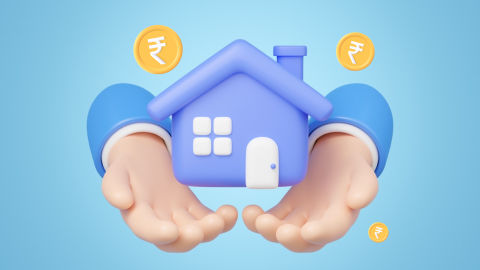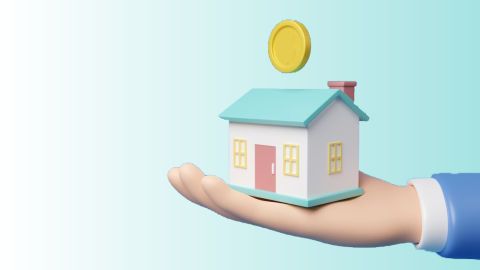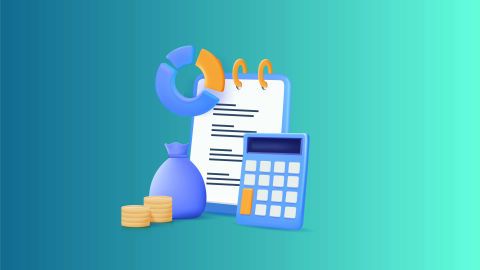A hectare is a metric unit of area equal to 10,000 square meters, often used for large plots of land, such as agricultural fields. On the other hand, gaj is commonly used in parts of northern India, where it’s equivalent to a square yard, and is typically used for smaller land areas like plots and residential spaces.
If you are considering utilising your property for financial purposes, aloan against propertycan help you unlock the value of your land. Understanding these units and their conversions ensures you can accurately assess your property's worth when securing a loan.
Read on to know the process of converting hectare to gaj, and explore common mistakes to avoid in property transactions.
Hectare to gaj conversion: Formula and calculation
To convert hectares to gaj, we need to first understand the relationship between the two units. The basic conversion formula is simple and can be used in most cases.Conversion formula:
1 hectare = 10,000 square meters
1 gaj (square yard) = 0.8361 square meters
So, the formula for converting hectares to gaj is:
Gaj=Hectares×1195.9
This means that 1 hectare is approximately equal to1195.9 gaj.
Example calculation:
If you have a plot of 2 hectares, the conversion would be:
2 hectares×1195.9=2391.8 gaj
Thus, 2 hectares is equivalent to about 2391.8 gaj.
Hectare to gaj conversion
Here is a handy table to quickly help you convert hectares to gaj:| Hectares | Gaj (approx.) |
| 1 | 1195.9 |
| 2 | 2391.8 |
| 5 | 5979.5 |
| 10 | 11,959 |
| 20 | 23,918 |
| 50 | 59,795 |
| 100 | 119,590 |
How to convert hectare to gaj?
To convert hectares to gaj, you need to multiply the number of hectares by1195.9, as 1 hectare is equivalent to approximately 1195.9 gaj. This conversion factor helps you determine the area in gaj, a unit often used for residential or smaller land plots in parts of India. For example, if you have 3 hectares of land, you simply multiply3 hectares × 1195.9, resulting in3587.7 gaj. This formula is useful when dealing with agricultural or real estate transactions, ensuring accurate calculations when converting between larger land measurements like hectares and smaller ones like gaj.Online tools for hectare to gaj conversion
In the digital age, there are several online tools such as area conversion calculator available that can help you perform hectare to gaj conversions in just a few seconds. These tools are convenient, especially for professionals like real estate agents, property buyers, and land developers who need to make quick and accurate calculations.Many real estate websites and land measurement apps provide automatic conversion features. Simply enter the number of hectares, and the tool will instantly show you the equivalent area in gaj.
However, while these tools are helpful, it’s important to be aware of the region-specific factors that may affect the accuracy of conversions. Not all calculators account for local variations in measurement systems. Therefore, it's always a good idea to double-check the results with reliable local sources when possible.
Common mistakes to avoid in hectare to gaj conversion
Converting hectares to gaj may seem simple, but there are a few common mistakes that people often make. Here is what to watch out for:1.Using the wrong conversion factor
One of the most common mistakes is using an incorrect conversion factor. The correct factor is1195.9, as mentioned earlier. Always ensure you’re using the right factor for accuracy.
2.Ignoring local variations
The definition of a gaj can vary across regions. In some areas, it might refer to a slightly different measurement, which can cause discrepancies in calculations. Always confirm with local authorities if you are unsure.
3.Rounding off too early
Rounding off numbers too early can lead to small errors that compound over time. Try to maintain as much precision as possible during the conversion process.
4.Mixing up units
Be careful not to confuse hectares with other units like acres or square meters. Keeping track of your units is essential to avoid confusion.
Importance of accurate land measurement in real estate transactions
In India, where real estate transactions and land development projects are frequent, accurate land measurement is critical. Whether you are buying, selling, or leasing land, precise measurements determine the value of the property and avoid misunderstandings between buyers and sellers.Incorrect land measurements can lead to:
Financial losses: If the land area is miscalculated, you could end up paying more than you should for a property or, conversely, be underpaid if you are selling.
Legal issues: Property disputes often arise due to incorrect measurements, leading to legal battles. Ensuring that the measurement is accurate can help you avoid costly legal complications.
Delayed transactions: Misunderstandings about land size can cause delays in the transaction process, making it harder to close deals quickly.
How to use hectare to gaj conversion in land valuation?
Land valuation is an important process that helps determine the fair market value of a property. When you convert hectares to gaj, it allows property valuers to assess the size of the land in a way that’s familiar to local buyers and sellers.In real estate, the price of land is often determined based on its area in smaller units like gaj or square feet. By converting hectares (which are used for larger plots, often in rural areas) to gaj, valuers can calculate the appropriate price per unit area and provide an accurate valuation.
For example, if the market rate in your area is Rs. 500 per gaj, and you have a plot that measures 10 hectares (equivalent to 11,959 gaj), the valuation would be:
11,959 gaj× Rs.500=Rs. 5,979,500
This allows both buyers and sellers to agree on a fair price based on the accurate measurement of the land.
The role of technology in simplifying land measurement conversions
Technology has played a significant role in simplifying land measurement conversions. With the advent of mobile apps and online tools, professionals in real estate, agriculture, and construction can now perform conversions in seconds, saving valuable time and reducing human error.GPS and GIS technologies: Technologies like GPS (Global Positioning System) and GIS (Geographic Information Systems) have also helped improve the accuracy of land measurement. Surveyors can now use these tools to measure land more accurately, minimising errors that might occur when converting units.
Mobile apps: Several mobile apps are now available that can instantly calculate land areas in hectares, gaj, and other units. These apps also allow users to save and share measurements, streamlining the process of land assessment.
Comparing hectare to gaj with other land measurement units
To better understand the size of land measured in hectares and gaj, here’s a quick comparison with other common units:| Unit | Equivalent in square meters | Common use |
| Hectare | 10,000 | Large land, agriculture |
| Gaj (square yard) | 0.8361 | Residential/Urban Land |
| Acre | 4,046.86 | Agricultural, Rural Land |
| Square feet | 0.0929 | Small residential plots |
Tips for surveyors: Ensuring accurate hectare to gaj conversions
For surveyors working in the field, accuracy is essential. Here are some tips to ensure precise conversions:Use high-quality tools: Invest in reliable calculators, apps, and measuring instruments to reduce human error.
Double-check your work: Always double-check your conversions, especially if the land size is large.
Understand local conventions: Be familiar with local units of measurement, as gaj may vary slightly between regions.
Stay up to date: Keep yourself updated with the latest tools and technologies to ensure accurate and efficient land measurements.




